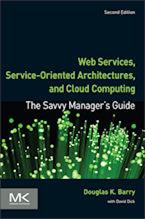Business Process Execution Language (BPEL)
Business Process Execution Language (BPEL)1 defines a notation for specifying business process behavior based on Web Services. Business processes can be described in two ways:
- Executable business processes model actual behavior of a participant in a business interaction.
- Business protocols, in contrast, use process descriptions that specify the mutually visible message exchange behavior of each of the parties involved in the protocol, without revealing their internal behavior. The process descriptions for business protocols are called abstract processes.
BPEL is used to model the behavior of both executable and abstract processes. The scope includes:
- Sequencing of process activities, especially Web Service interactions
- Correlation of messages and process instances
- Recovery behavior in case of failures and exceptional conditions
- Bilateral Web Service based relationships between process roles
Organization: OASIS
More information: BPEL page on the OASIS website
1Formerly Business Process Execution Language for Web Services (BPEL4WS)
Context for Business Process Execution Language (BPEL)
Related Articles for Business Process Execution Language (BPEL)
- Business Centric Methodology (BCM)
- Business Process Query Language (BPQL)
- Business Process Specification Schema (BPSS)
- Business Transaction Protocol (BTP)
- Collaboration Protocol Profile/Agreement (CPP/A)
- Common Alerting Protocol (CAP)
- Content Assembly Mechanism (CAM)
- Partner Interface Process (PIP)
- RosettaNet Implementation Framework (RNIF)
- Web Services Flow Language (WSFL)
- Wf-XML
- WS Choreography Description Language (CDL)
- XLANG
Author
Douglas K Barry
Principal
You may use this material for your work or classes. Reprint Policy. Be sure to check the menu at the left for other articles available on this site.
The Savvy Manager's Guide
Douglas K Barry is also the author of a book that explains Web Services, service-oriented architecture, and Cloud Computing in an easy-to-understand, non-technical manner.
Web Services, Service-Oriented Architectures, and Cloud Computing: The Savvy Manager's Guide (Second Edition)
by Douglas K Barry with David Dick
This is a guide for the savvy manager who wants to capitalize on the wave of change that is occurring with Web Services, service-oriented architecture, and—more recently—Cloud Computing. The changes wrought by these technologies will require both a basic grasp of the technologies and an effective way to deal with how these changes will affect the people who build and use the systems in our organizations. This book covers both issues. Managers at all levels of all organizations must be aware of both the changes that we are now seeing and ways to deal with issues created by those changes.

